Tagebuch
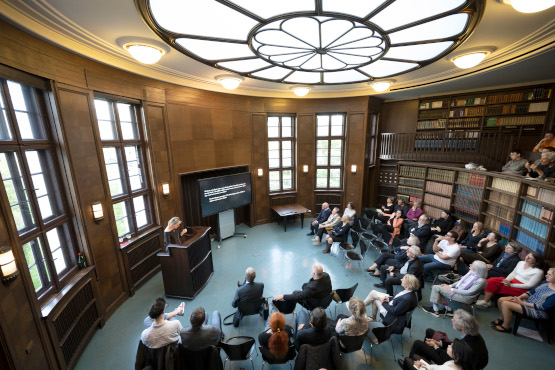
Barbara Baert
Fotos: Thies Ibold
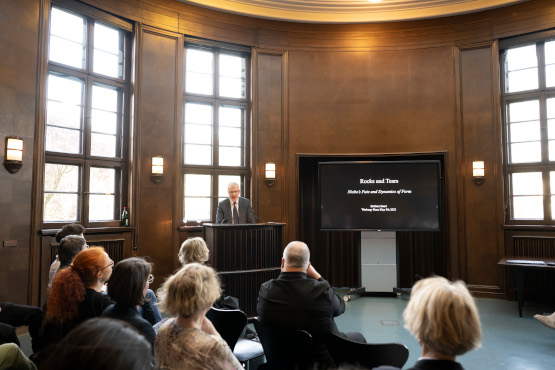
Frank Fehrenbach, Laudatio
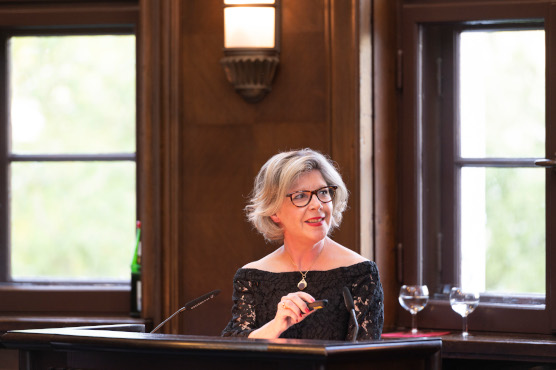

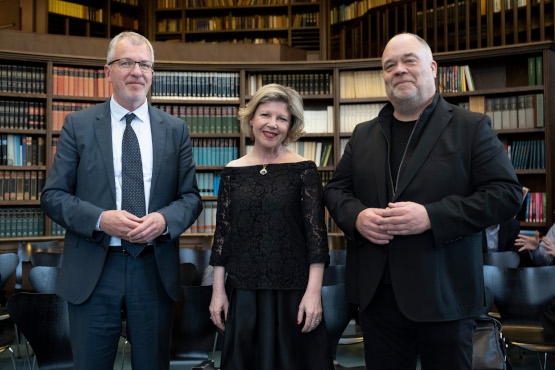
Frank Fehrenbach, Barbara Baert, Uwe Fleckner
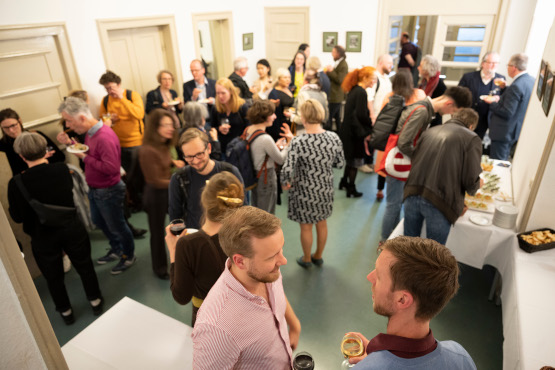
Online: Vortrag der Aby-Warburg-Stiftungsprofessorin 2023, Barbara Baert
»Rocks and Tears. Niobe’s Fate as Dynamics of Form«
Im Namen ihrer Vorsitzenden Katharina Fegebank, Zweite Bürgermeisterin der Freien und Hansestadt Hamburg, lud die Aby-Warburg-Stiftung am Dienstag, 9. Mai sehr herzlich ein zum Vortrag der Stiftungsprofessorin 2023, Barbara Baert, und einem anschließenden Empfang.
Frank Fehrenbach, Kunstgeschichtliches Seminar der Universität Hamburg, sprach als Mitglied des wissenschaftlichen Beirats der Aby-Warburg-Stiftung die Laudatio.
Barbara Baert sprach zu: »Rocks and Tears. Niobe’s Fate as Dynamics of Form«.
Publius Ovid (43 BC–17/18 AD) describes in his Metamorphoses Niobe’s transformation into a weeping rock. In this lecture we will see how Niobe becomes a paradigm for form and matter, for the dynamics between painting and sculpture, for the energies between life and death, and hence also for the humanist and (neo)classicist aesthetics debate. Aby Warburg as well refers to the Niobe motif in one of the panels of his Bilderatlas: Panel 5, Beraubte Mutter. (Niobe, Flucht und Schrecken), displays the images of both the bereaved mother (Niobe) and the murderous mother (Medea). The particular montage also introduces the theme of the descent to the underworld. It will become clear how the cluster of motifs around the figure of Niobe – hybris, lamentatio and the chthonic substrate – functions as a direct entry to the bipolar hermeneutics of the visual medium. Niobe’s fate incorporates das Auseinandertreten der Pole, polar separation.
The ›weeping rock‹ that, according to legend, still stands on Mount Sipylus in Turkey, draws upon even deeper anthropological patterns. Petrification indicates inertia, frigidity and a Medusan psychosis. In nature, stones and rocks have a ›slumbering insistence‹. Stones are after all visible but impenetrable. Rocks indicate an irrevocable absence in their massive presence, and ›have abode‹ in the otherworldly region. But Niobe’s rock weeps. She combines the paradigm of petrification with that of fluidity. Niobe is a silent tomb and a crying womb at the same time. Niobe, dry and wet, numb and murmuring, embodies the dynamics between form and formless, between silence and sound. Her fate gives expression to das erstarrte Leben.
Barbara Baert (*1967) hat 2023 die Aby-Warburg-Stiftungsprofessur inne. An der KU Leuven lehrt sie Ikonologie, Kunsttheorie und Analyse sowie Kunst des Mittelalters. Ihre Arbeit vereint Wissen und Fragen aus der Ideengeschichte, Kulturanthropologie und Philosophie und zeugt von einem tiefen Verständnis für kulturelle Archetypen und ihre Symptome in den Bildkünsten. Sie wurde vielfach ausgezeichnet, darunter 2016 mit dem prestigeträchtigen Francqui Prize for Human Sciences. Einladungen als Gastprofessorin führten sie an zahlreiche Universitäten in Europa, Japan und den USA. Barbara Baert war Fellow am Internationalen Kolleg für Kulturforschung und Medienphilosophie (IKKM) der Bauhaus-Universität Weimar (2015), am Istituto di Studi Avanzati der Università di Bologna (2018), am Institute for Advanced Study in Princeton (2019) sowie der DFG- Kolleg-Forschergruppe BildEvidenz der Freien Universität Berlin (2020). 2021 hielt sie die James Loeb Lecture am Zentralinstitut für Kunstgeschichte, München. Unter ihren jüngsten Veröffentlichungen sind die Bücher: Signed PAN. Erwin Panofsky’s (1892-1968) »The History of Art as a Humanistic Discipline« (Princeton, 1938) (Peeters Publishers), 2020; From Kairos to Occasio along Fortuna. Text / Image / Afterlife (Brepols & Harvey Miller), 2021; The Gaze from Above. Reflections on Cosmic Eyes in Visual Culture (Peeters Publishers), 2021; Petrifying Gazes. Danaë and the Uncanny Space (Peeters Publishers), 2021; und Looking Into the Rain. Magic-Moisture-Medium (De Gruyter), 2022. Am Warburg-Haus arbeitete Barbara Baert an ihrem neuen Buch Closer to the Marshes. Myth, Method & Medium.
Die Aufzeichnung erfolgte durch das Team des eLearning-Büros der Fakultät für Geisteswissenschaften und steht auf der UHH-eigenen Plattform Lecture2Go bereit.
Dynamiken der Form / Publikationen / Warburg-Professur